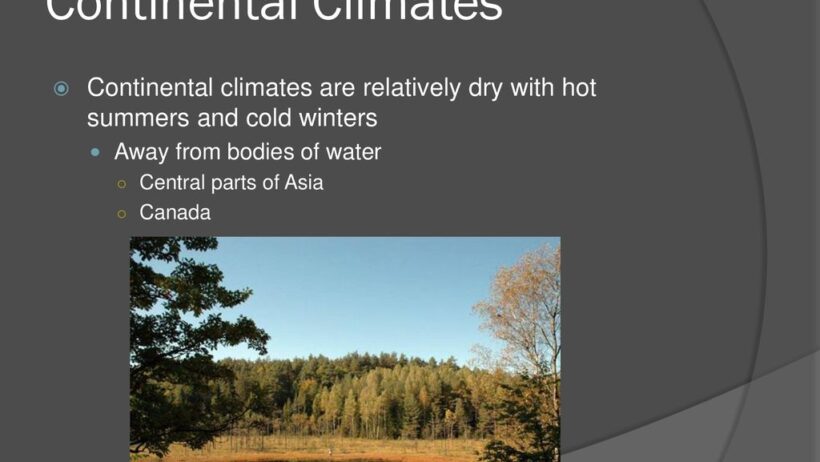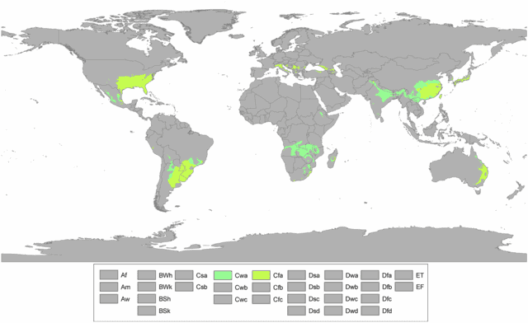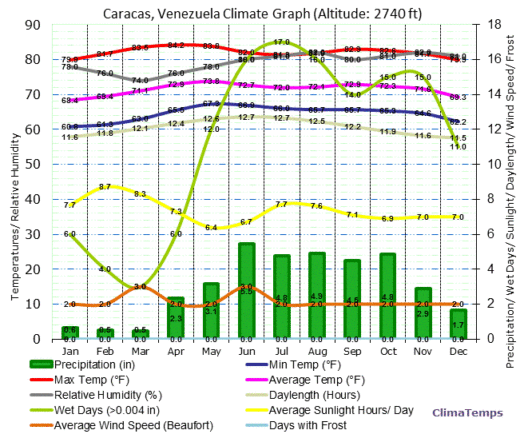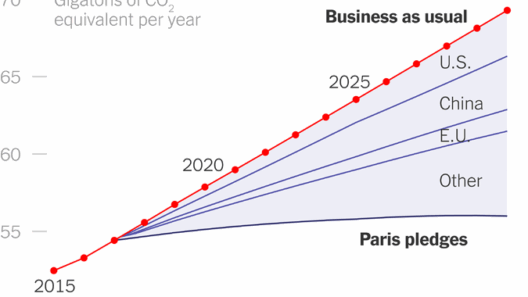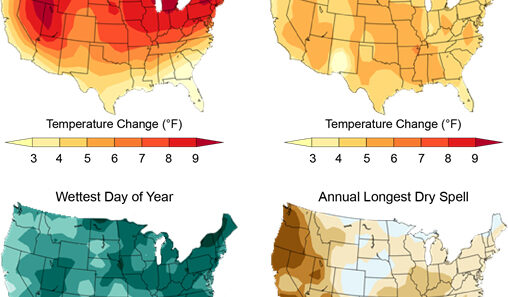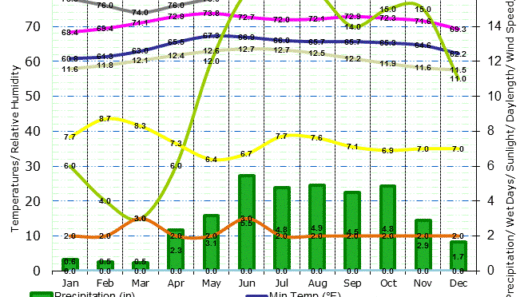What exactly is a continental climate, and how does it differ from other climatic zones? Imagine living in a place where summers sizzle with heat, while winters plunge into frigid temperatures. Such stark contrasts can present both opportunities and challenges. Understanding the intricacies of a continental climate is essential, especially as the world faces increasing concerns about climate variability and change.
Continental climates are predominantly characterized by significant temperature differences between seasons. Unlike maritime climates, which are more influenced by oceanic patterns, continental climates are often found in the interior regions of continents, far removed from the moderating effects of large bodies of water. This geographical isolation leads to pronounced seasonal variations: summery exuberance and wintry starkness become the essence of life in these areas.
The defining features of a continental climate can be observed in both temperature and precipitation patterns. This climate type typically experiences hot summers with temperatures soaring above 30°C (86°F) and cold winters, where thermometers can plunge well below freezing, often dropping to –30°C (–22°F) or lower in more severe instances. The temperature fluctuation gives rise to a unique ecosystem that is unlike any other.
To further dissect what constitutes a continental climate, we must consider its geographical distribution. These climates are primarily found in regions such as Central Asia, Eastern Europe, and parts of North America. For instance, cities like Chicago, Moscow, and Ulaanbaatar flourish under such climatic regimes. In these locations, the daily life, agricultural practices, and even local fauna and flora are closely entwined with the climate’s cyclical nature.
A curious question arises: what adaptations have plants and animals developed to thrive in such extreme conditions? In regions experiencing continental climates, vegetation adapts through variations in leaf structure, growth patterns, and dormancy periods to endure harsh winters and intense summer heat. Deciduous trees dominate, shedding leaves in the fall to prevent moisture loss during the frigid months. On the flip side, animals exhibit remarkable behavioral modifications, migrating or hibernating during the most extreme cold spells.
Precipitation in continental climates demonstrates a heterogeneous distribution, challenging assumptions about the relationship between climate and moisture. While these areas can be relatively dry, summer months often bring thunderstorms, resulting in searing heat coupled with sudden downpours. This discrepancy can lead to complications for local ecosystems. How can we effectively manage agricultural production in the face of such unpredictability? This question underscores the need for adaptive farming techniques that take into account both the plentiful summers and scarce winters.
The warming planet adds another layer to our inquiry about continental climates. Climate change results in altered precipitation patterns, prolonged droughts, and increasingly intense weather phenomena. One might ask: how resilient are these ecosystems, and can they endure the stressors of a changing climate? Evidence of shifting climate zones could lead to significant disruptions in these regions – from crop failures to wildlife displacement – creating a pressing call to action.
As we grapple with the implications of a warming globe, a further challenge beckons: how do we balance human development with environmental conservation? Urbanization trends in continental climate regions often lead to increased greenhouse gas emissions, exacerbating existing issues. The construction of urban infrastructures must align seamlessly with the surrounding environment to mitigate detrimental impacts.
Policymakers, scientists, and environmentalists are now grappling with innovative solutions to manage these difficult dynamics. Sustainable agriculture practices, enhanced forestry management, and mindful urban planning are paramount. The dialogue about climate must include an understanding of historical impacts and how they shape current realities. It is crucial to engage local communities in conservation efforts, emphasizing the importance of preservation amidst development.
Education plays an indispensable role in addressing the complexities of continental climates. Raising awareness about the unique ecosystems within these regions fosters a deeper appreciation for their contributions to biodiversity and ecological balance. Informative programs and policy initiatives can empower citizens to participate in climate resilience efforts, building a collective responsibility for our environment.
In conclusion, understanding what a continental climate entails is crucial for navigating the complexities of our ecological and social landscapes. The sharp contrasts between hot summers and cold winters pose both challenges and opportunities for adaptation and innovation. As we face the intricacies of climate change and human development, fostering a balance that respects and nurtures these regions becomes imperative. As stewards of our environment, we must rise to the occasion, ensuring that future generations inherit a resilient planet. With foresight and solidarity, we can craft a sustainable future harmonizing with the pulse of our continental climates.



